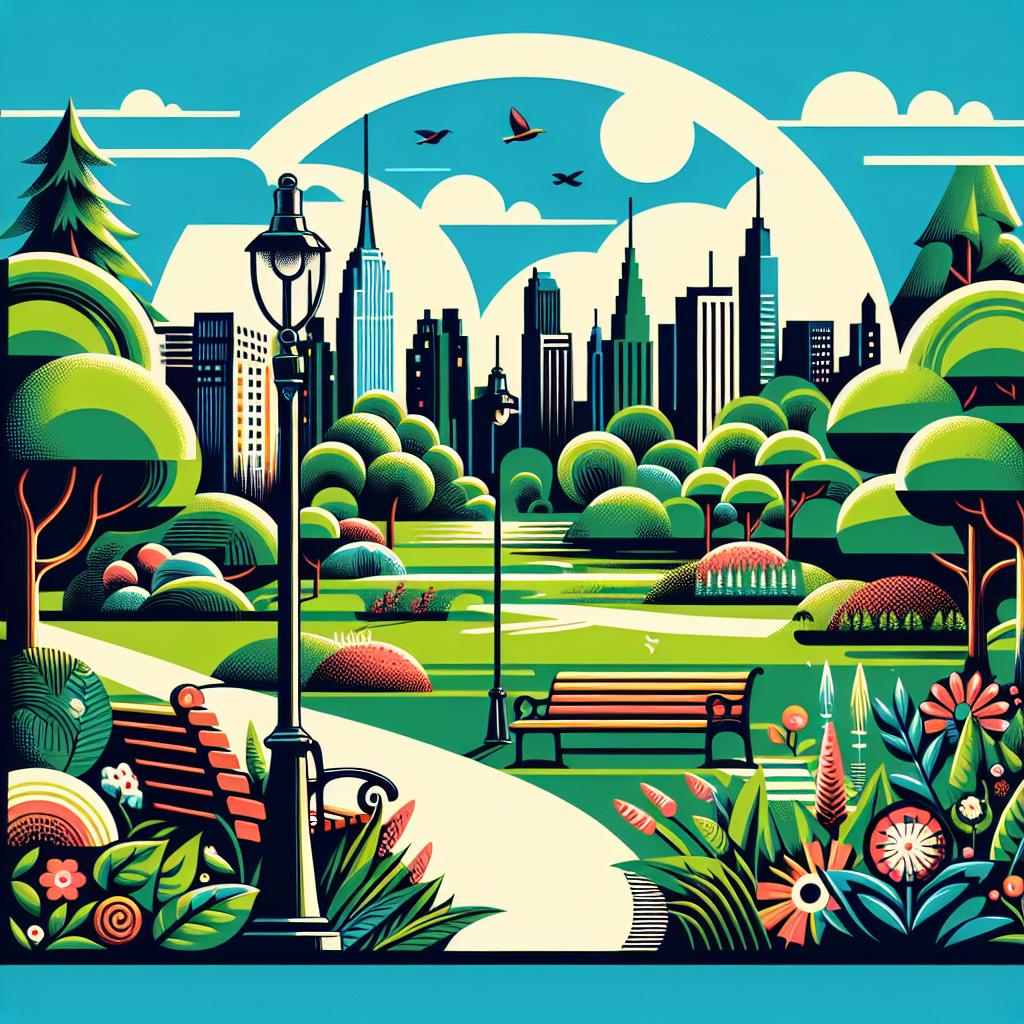In the hustle and bustle of urban living, it is easy to overlook the profound impact that nature has on our well-being. Increasing stress levels and mental health issues are becoming more common in crowded metropolitan areas, prompting urban planners and public health officials to reevaluate the significance of green spaces within city environments. A growing body of research indicates that urban green spaces, such as parks and community gardens, play a vital role in promoting mental health and reducing stress. As cities around the globe grapple with these challenges, understanding the benefits of incorporating nature into urban settings is more critical than ever.
The Healing Power of Nature
Access to green spaces is linked to numerous positive mental health outcomes. Studies have shown that individuals living in densely populated areas with limited access to nature often experience higher levels of anxiety, depression, and stress. Conversely, access to parks, gardens, and natural landscapes can significantly mitigate these risks.
One significant study published in Environmental Health Perspectives detailed how people who lived closer to urban greenery reported lower stress levels and were more engaged in physical activities compared to those isolated from nature. The sight of tree-lined streets, vibrant parks, and flourishing community gardens contributes to an overall sense of peace and well-being.
Moreover, research conducted by the University of Queensland found that spending time in nature can elevate mood and harness the body’s natural relaxation response. The study highlights the crucial role that urban green spaces play in reducing the risk of mental health issues, especially against the backdrop of the fast-paced urban lifestyle that many encounter daily.

Urban Planning and Mental Health
As awareness of the connection between urban green spaces and mental health grows, city planners are increasingly prioritizing green initiatives. Many cities are starting to embrace a holistic approach to urban planning—one that recognizes nature’s invaluable contribution to residents’ quality of life.
For instance, cities like New York and London have expanded their green covers with rooftop gardens, urban farms, and the introduction of more comprehensive park networks, aiding both ecological sustainability and urban dwellers’ mental health. This shift stresses the importance of green planning; it demonstrates how viable and therapeutic connections to nature can be amidst concrete jungles.
In addition, the idea of biophilic design—a concept aiming to integrate nature into built environments—has increasingly influenced architecture and urban planning. Developers are now designing buildings and communities with wide open spaces, natural light, and the inclusion of flora, affirming the belief that interacting with nature leads to healthier lives.
Community Gardens as Urban Sanctuaries
Community gardens are wonderful examples of how urban green spaces can foster mental health and community connectedness. These gardens serve not only as fruitful plots of land but also as social anchors that bring neighbors together. Gardening offers a variety of physical and mental health benefits, including fostering a sense of purpose and belonging while offering a creative outlet and physical activity.
Moreover, studies have pointed toward the role of community gardens in promoting psychological well-being. People engaged with gardening report feelings of accomplishment and reduced anxiety levels, thriving within the natural process of growing and nurturing plants. Urban agriculture is also emerging as a dynamic way to build resilience in cities, supporting locally sourced food systems and encouraging a connection to the earth.
The rise of community involvement in garden initiatives highlights the notion that mutual support among neighbors, coupled with the gardening experience, can significantly contribute to improved mental outlooks. Projects such as the 596 Acres in Brooklyn foster this notion, creating a tapestry of green in unutilized urban areas while underscoring the community’s shared narrative of resilience.
A Recipe for Sustainable Cities
Ultimately, reimagining urban environments with green spaces at the forefront is about more than just aesthetics—it’s an investment in the well-being of residents. With cities growing at an unprecedented rate due to urbanization, we face immense pressure to secure mental health resources and support effective connectivity with nature within densely populated regions.
With civic leaders gradually acknowledging the essential role parks and greenery can play in enhancing the quality of urban life, this might usher in an era that prioritizes greener futures. There lies within us a collective responsibility to advocate for more parks, community gardens, and green corridors, understanding that every inch of greenery restored enhances lives.
As we endeavor towards this goal, we commence a broader conversation around reclaiming space for mental wellness through nature. Both painful and profound, this conversation helps remind us of our human connection to the earth and each other—a relationship that fulfills a fundamental need for sustainability, stability, and respite in troubled urban landscapes.



